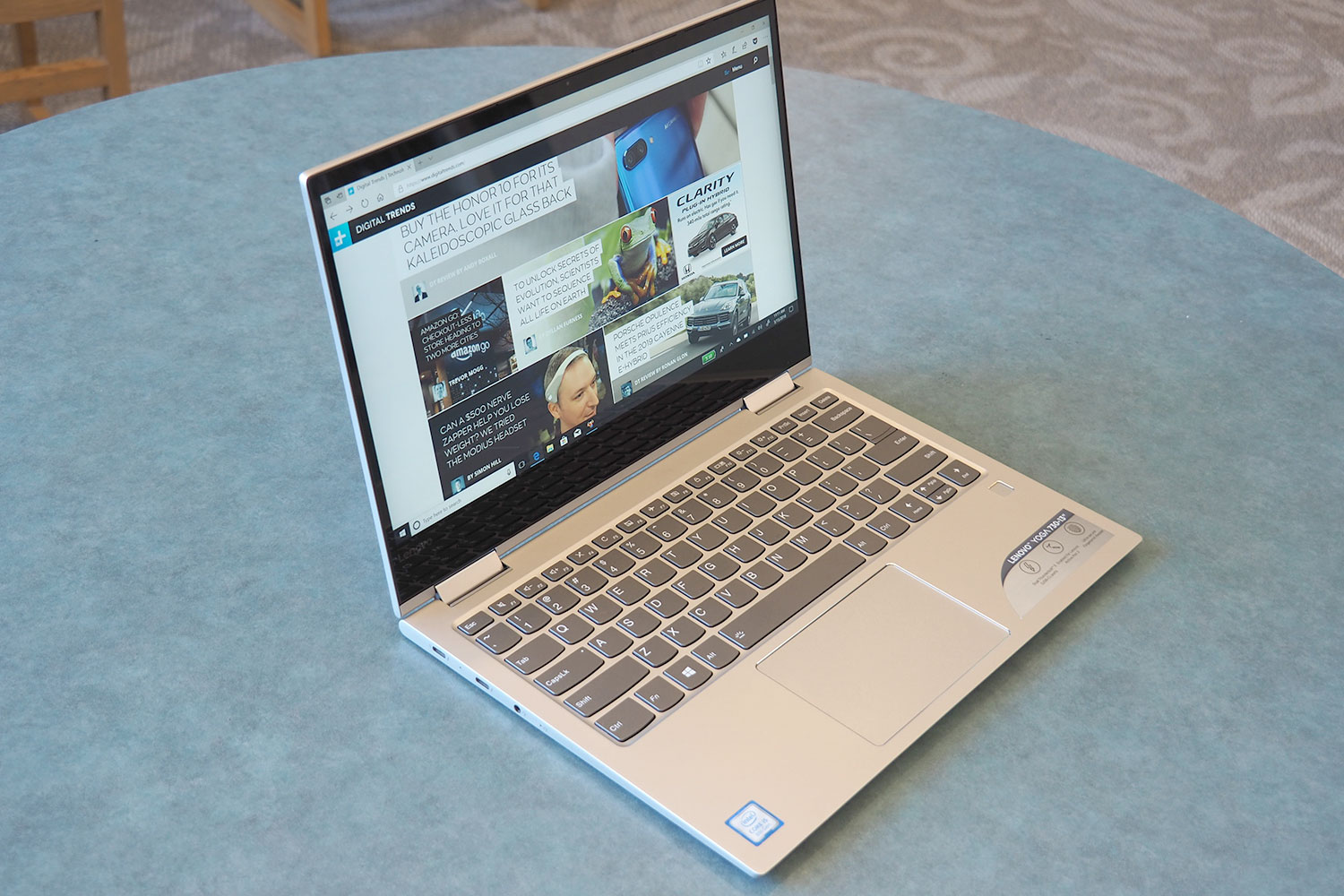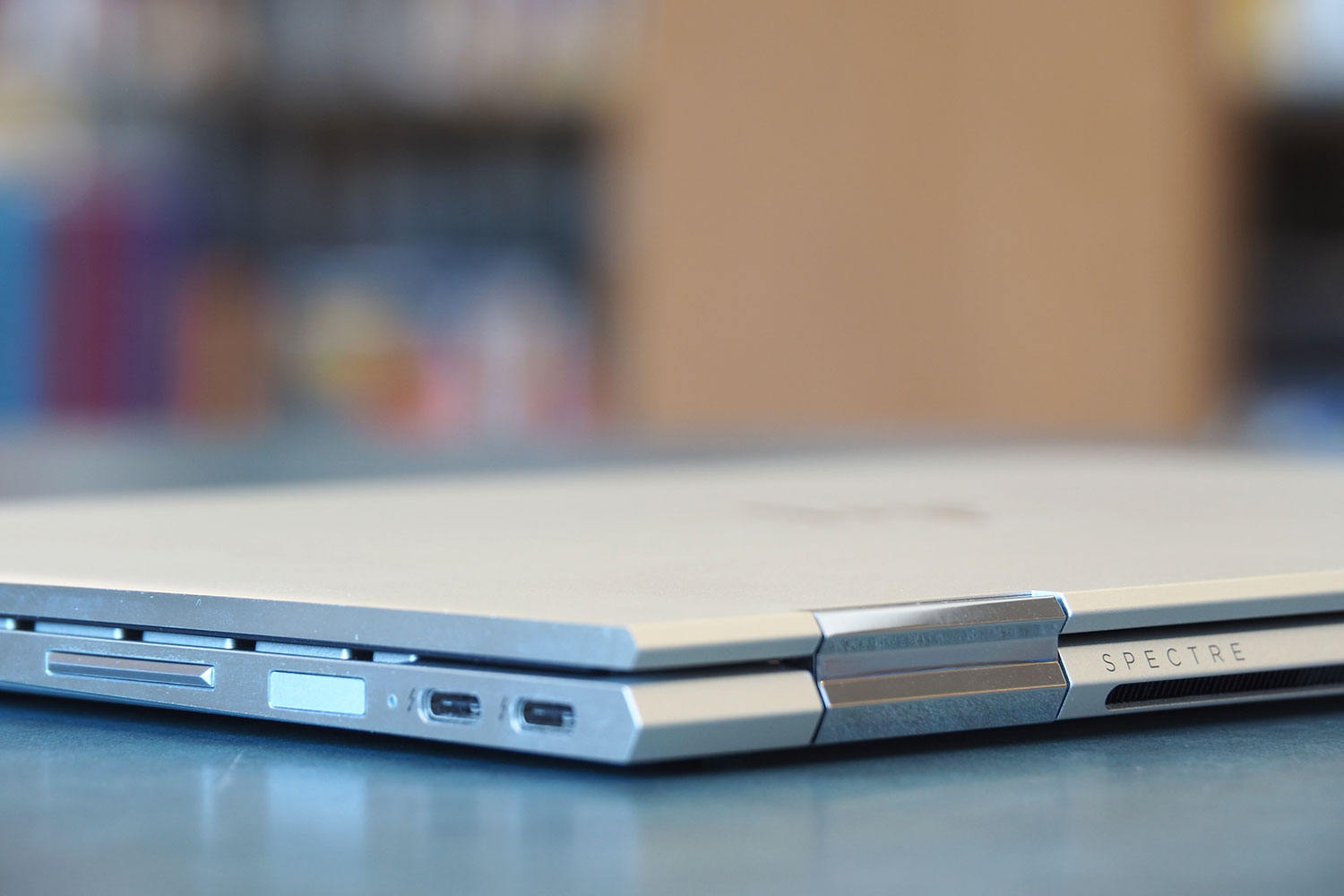
The convertible 2-in-1 market has grown into its own over the last several years, with a host of options ranging from well under $1,000 up to over $2,000. Intel’s 8th-generation Core processors have also made their way into more notebooks, and they’re becoming a powerful and efficient CPU staple that essentially guarantees a great mobile productivity experience.
In the midst of this continued improvement, Lenovo recently refreshed its solid midrange convertible 2-in-1 with the Yoga 730 13-inch. It goes up against some stiff competition, and so we pitted it against the best anywhere near its price range, HP’s Spectre x360 13-inch convertible. Does the Yoga 730 offer enough improvement to keep up?
Design

The Yoga 730 maintains the Yoga 720’s conservative, businesslike demeanor, coming in a silver-gray chassis that doesn’t stand out in a crowded field. It looks fine, and if you’re willing to let it fade into the background, then you’ll be pleased with its aesthetic. You’ll also enjoy its solid build quality, functional convertible hinge, and thin (0.62 inches) and light (2.47 pounds) chassis. It won’t win any beauty contests, but it won’t let you down when you want to get to work.
The Spectre x360, on the other hand, wants to stand out. HP offers three different color schemes, including a bold Dark Ash Silver and lovely Rose Gold, to go with the more traditional Natural Silver. The aesthetic is angular and modern, with chrome accents that shine things up without making them ostentatious. And the Spectre 360 is just as solidly built, thinner at 0.54 inches, slightly heavier at 2.78 pounds, and also offers a robust convertible hinge.
When it comes to input options, we also preferred the Spectre x360’s keyboard for its greater travel and lighter, springier mechanism. The Yoga 730’s keyboard left us a bit flat, and it wasn’t nearly as comfortable for longer typing sessions. The touchpads are a different story, where HP’s continued decision to use Synaptic drivers and not Microsoft’s Precision Touchpad protocol gives the Yoga 730 the advantage. Both notebooks offer similar active pens, with 4,096 levels of pressure sensitivity and tilt support, and so that’s a draw.
There’s nothing wrong with the Yoga 730’s design, but the Spectre x360 simply cuts a more striking figure.
Performance

Both the Yoga 730 and the Spectre x360 are equipped with Intel’s quad-core 8th-generation CPUs. As such, they’re similar performers all around, whether you’re running synthetic benchmarks or churning through video encoding projects. Simply put, you can’t go wrong with either when it comes to getting your productivity tasks done efficiently and without delay. Even the PCIe solid-state drives (SSDs) are equally fast, meaning boot times, loading apps, and working with large data sets will be fast on either machine.
There is some divergence when it comes to their displays, however. Both utilize 13.3-inch IPS panels and offer 1080p options, but the Spectre x360’s display is brighter, has better contrast, and enjoys a slightly wider color gamut with better accuracy. The Yoga 730’s display would have been excellent a couple of years ago, but the market has passed it up.
Perhaps more important, HP also offers a 4K UHD (3,840 x 2,160) resolution display that offers significantly sharper text and high-quality video, along with a privacy screen that blocks things out from the left and the right for working in public on sensitive data. Both displays add a bit of a premium in terms of pricing, and the 4K display will have a real impact on battery life, but options are a good thing in our opinion.
Portability

We’ve already covered the physical dimensions of the Yoga 730 and Spectre x360, nothing that the former is slightly thicker but also lighter than the latter. Both are highly portable 2-in-1s, though, that are equally easy to toss into a bag and carry around. In addition, both can be comfortably used as tablets with their active pens thanks to their svelte designs.
However, the Spectre x360 has the upper hand when it comes to battery life. Even when equipped with a faster Core i7-8550U processor compared to the Core i5-8250U in our Yogo 730 review unit, the HP lasted for significantly longer on a single charge. It lasted anywhere from an hour longer on our most demanding battery test to a full four hours longer on our video looping benchmark. Simply put, the Spectre x360 is going to give you a much better chance of making it through a full workday without need to tap into A/C power.
We like highly portable notebooks, and both qualify nicely, but we like longer battery life just as much — and the Spectre x360 simply offers more.
Conclusion

You can save some money by opting for the Lenovo Yoga 730, spending as little as $850 for a Core i5-8250U, 8GB of RAM, and a 256GB PCIe SSD. The same Spectre x360 configuration will cost you $1,120 — although that includes the pen, which will cost you an extra $70 from Lenovo. You can spend a lot more on the Spectre x360 as well, given the 4K display option and larger 2TB SSD.
But the HP is worth the money, in our opinion. It looks better, it has a better keyboard, and it lasts significantly longer on a charge. You get what you pay for, in other words, and you get a lot more with the Spectre x360.
Editors' Recommendations
- Why the latest ThinkPad X1 Yoga Gen 8 isn’t worth the upgrade
- HP Envy x360 13 vs. Dell XPS 13: the best tiny laptop?
- Asus ZenBook S 13 Flip vs. HP Spectre x360 13.5: you can’t go wrong
- New HP Spectre x360 16 ditches Nvidia, embraces Intel Arc
- Lenovo ThinkPad X12 Detachable vs. Microsoft Surface Pro 8


